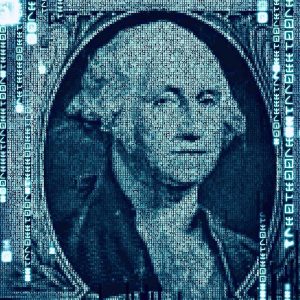
Next week, the House Committee on Financial Services will hold a hearing on Central Bank Digital Currencies (CBDCs). This is not the first Congressional hearing on CBDCs, nor will it be the last. The concept of a digital dollar, issued by a central bank, is a hot topic for policymakers. While the hearing memo, along with the individuals testifying in front of the Committee, have not been released, the title is apt: The Promises and Perils of Central Bank Digital Currencies.
For proponents, a digital dollar can remove some of the friction between transfers and payments while perhaps enabling more access for the underbanked. Of course, these benefits are paired with profound policy questions as to how government officials should manage digital currency – not to mention the possibility of cyber risk and privacy intrusions.
In advance of the Committee hearing, Crowdfund Insider connected with attorney Gregory Zerzan, a shareholder at Jordan Ramis, who previously worked at the U.S. Department of the Treasury, the U.S. Department of the Interior and acted as legal counsel to the House committees on Agriculture, Financial Services and Energy & Commerce as well as the Committee on Financial Services. Zerzan understands the machinations of Washington, DC quite well. We discussed his thoughts on the potential for CBDCs and what policymakers will do when it comes to a digital dollar. Our conversation is shared below.
Recently, Federal Reserve Chairman Jerome Powell said it was his opinion that the U.S. is not behind the rest of the world in pursuing a digital dollar. Do you agree with him? Can you explain why or why not?
Gregory Zerzan: It depends on what one means by a “digital dollar.” For rounding purposes almost all U.S. dollar transactions are virtual; some people like to distinguish these virtual dollars as being “electronic” rather than “digital,” but the bottom line is that the U.S. dollar for the most part exists as a notional mark on a digital ledger. The real question is who controls that ledger; with a digital yuan, the People’s Bank of China gives individual users the equivalent of digital personal accounts. Clearly, that is something the Fed has not done yet.
China has been testing a digital yuan for some time now with some speculating leadership hopes to boost its currency as a reserve currency. Is this a possibility?
Gregory Zerzan: China appears to be giving users the ability to disintermediate the banking system from the use of its currency. That could be an attractive option for those who don’t like how the U.S. government has employed sanctions and anti-money laundering tools to cut-off disfavored parties from the global financial system. However, the success of the digital yuan is directly tied to how much confidence users have that the Chinese government won’t abuse its power as the ultimate keeper of users’ accounts. That remains to be seen.
Powell also said that a CBDC may eliminate the need for stablecoins, as well as some other cryptocurrencies. What are your thoughts on this? Would this be the end of Tether, etc.?
Gregory Zerzan: If a CBDC means the Fed now has greater access to every dollar transaction, because it now controls the central ledger, that could make stablecoins more attractive. A digital dollar won’t kill stablecoins, but overly aggressive regulation might.
Regulatory enforcement actions would likely put a big dent in the market. Even where it is debatable whether such actions could survive a court challenge, the uncertainty alone would have a chilling effect. At least part of the attraction of stablecoin is that it offers a largely anonymous alternative to traditional accounts like money market funds and bank deposits.
Beyond cybersecurity concerns, what are the biggest policy questions when it comes to a digital dollar?
Gregory Zerzan: The biggest policy question is whether people are comfortable upending the banking system as it has existed in the U.S. since at least the early 1900s. Banking as we now know it is still designed around the idea that money is a physical thing that needs to be stored somewhere. Of course, that stopped being a reality when dollars became virtual and not backed by anything tangible.
Any true “digital dollar” requires that users have direct, disintermediated access to their money, which likely requires individual accounts at the Federal Reserve. Private banking could still exist, but it would now have to compete with whatever interest users of the digital dollar could earn at the Fed.
 A digital dollar would be the realm of the US Federal Reserve. Should there be any concerns about privacy issues? AML/KYC along the lines of BSA is expected – will the government have too much information?
A digital dollar would be the realm of the US Federal Reserve. Should there be any concerns about privacy issues? AML/KYC along the lines of BSA is expected – will the government have too much information?
Gregory Zerzan: It could be argued that digital dollar transactions wouldn’t pose greater privacy concerns than today’s largely electronic transactions. Whether under our current system or with a digital dollar, people wanting to remain anonymous in their dollar transactions are largely limited to using cash.
Frequently, alongside discussions of a CBDC is the possibility to better serve underbanked segments of the population. In your opinion, do you believe this is true? Why or why not?
Gregory Zerzan: Individual accounts at the Fed would allow Americans to receive a bank account as easily as they receive a social security number. Like a social security number, a Fed account could be established with little paperwork. The account number could be required information on an I-9 or W-4 so that when a person starts a job the employer knows where to send payments. All of this would require very little effort on the part of the individual.
What about the need for current accounts and retail banking? Some time ago, the Bank of England wrote an interesting paper on the impact of a CBDC and retail banks. Would these firms need to change?
Gregory Zerzan: A digital dollar based on individual Fed accounts could pose a huge challenge to retail banking. They would have to compete with the Fed on interest rates, and with other banks on finding attractive lending opportunities.
In the short term, the introduction of individual Fed accounts could prove very disruptive to lending. It is likely the Fed would need to work out new mechanisms for providing liquidity to banks that are less connected to a bank’s deposit base.
The Fed is working with MIT on a potential CBDC. Any idea as to when a digital dollar may be live and in the wild? Thoughts on the tech stack?
Gregory Zerzan: A digital dollar would likely require action by Congress. Already this year there has been a lot of discussion and a few congressional hearings on a CBDC, but it would be surprising if anything happens in the near term.
The House Committee on Financial Services, Subcommittee on National Security, International Development and Monetary Policy will hold the CBDC hearing on Tuesday, June 27 at 10 AM ET. The hearing will be live streamed on the Committee website.

